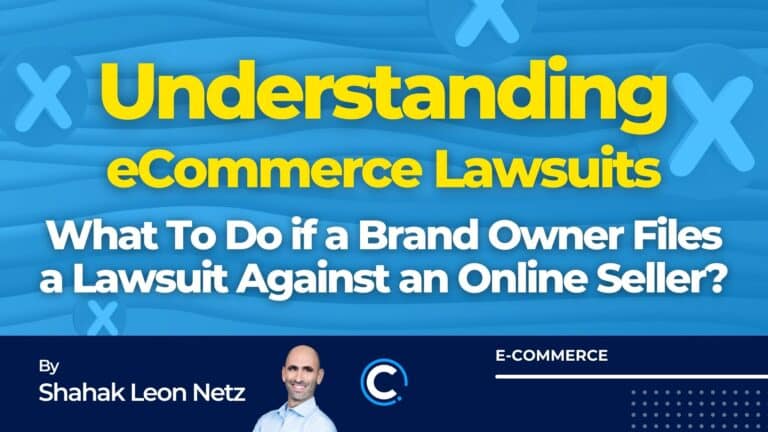
Table of Contents
The Process of a Lawsuit in eCommerce
Selling online can come with its fair share of challenges, and one particularly unpleasant surprise is finding yourself on the receiving end of a lawsuit. Brand owners are known to take swift legal action when they believe their trademarks, copyrights, or patents are being infringed upon by online sellers.
However, it’s important to note that while these lawsuits can be alarming, they are often resolved fairly quickly with an affordable settlement.
In this article, we will delve into the intricacies of eCommerce lawsuits, providing valuable insights on what typically unfolds when a brand owner initiates legal proceedings against an online seller. Whether you are an aspiring entrepreneur entering the world of e-commerce or someone seeking a deeper understanding of these legal battles, join us as we explore the steps involved and discover effective strategies to navigate through these challenges.Selling online can come with unpleasant surprises, like getting slapped with a lawsuit. Some brand owners don’t mess around when it comes to their brand. They get brand registries, trademarks, copyrights and patents, and will take legal action against sellers they think are infringing on their rights.
Here’s what usually happens:
Lawsuit time
Brand owners who think their rights are being violated will file a lawsuit in US Federal Court and name stores on platforms like Amazon, eBay, and Shopify as defendants.
Understanding Temporary Restraining Orders (TROs) and Their Impact
After the lawsuit is filed, the brand owner can get a temporary restraining order (TRO) from the court that stops you from getting paid by your selling platform (Amazon, eBay, etc.). You won’t be able to access your funds until the issue is resolved. The platform you’re selling on will let you know what’s happening and give you the lawyer’s contact info. The listings for the affected products will be removed from the platform.
What can you do? - Usually, settle.
You have two options: fight it in court or try to settle.
It’s a good idea to get legal help either way. First, figure out if you did actually infringe on the brand owner’s rights. If you did, they’ll likely want you to pay up to settle the case. Make sure any settlement agreement you sign covers all the bases and protects you legally. If your attorney finds no infringement, it should be demanded that the plaintiff dismiss its lawsuit and instructs the selling platform to release the hold.
How much will it cost?
The settlement amount depends on several factors, like how many units you sold of the accused product, your profits from these sales and the amount frozen in your seller account. After a settlement is reached and an agreement is signed, this should bring about the release from both the lawsuit and the payments restraint with the selling platform.
Who’s likely to sue you?
Some brands are more litigious than others. You might be surprised to find out that a word or phrase you thought was totally generic is actually trademarked. Some examples include EMOJI, FRISBEE, and POP IT (yes, there are trademarks!). So, it is best to avoid these terms and check if you are not sure about a certain term or product.
What happens if you ignore the lawsuit?
Consequences of Ignoring a Lawsuit and the Importance of Legal Assistance…
If you don’t do anything, the brand owner will likely get a default judgment against you and take any money you have frozen in your seller account. The hold on your seller account payments will remain in place. This can also have an adverse effect on your account health and may lead to further legal action by the rights owner.
In conclusion
A lawsuit is a major issue, but can be dealt with if you figure out whether your product is infringing, and negotiate a settlement that covers all bases.











